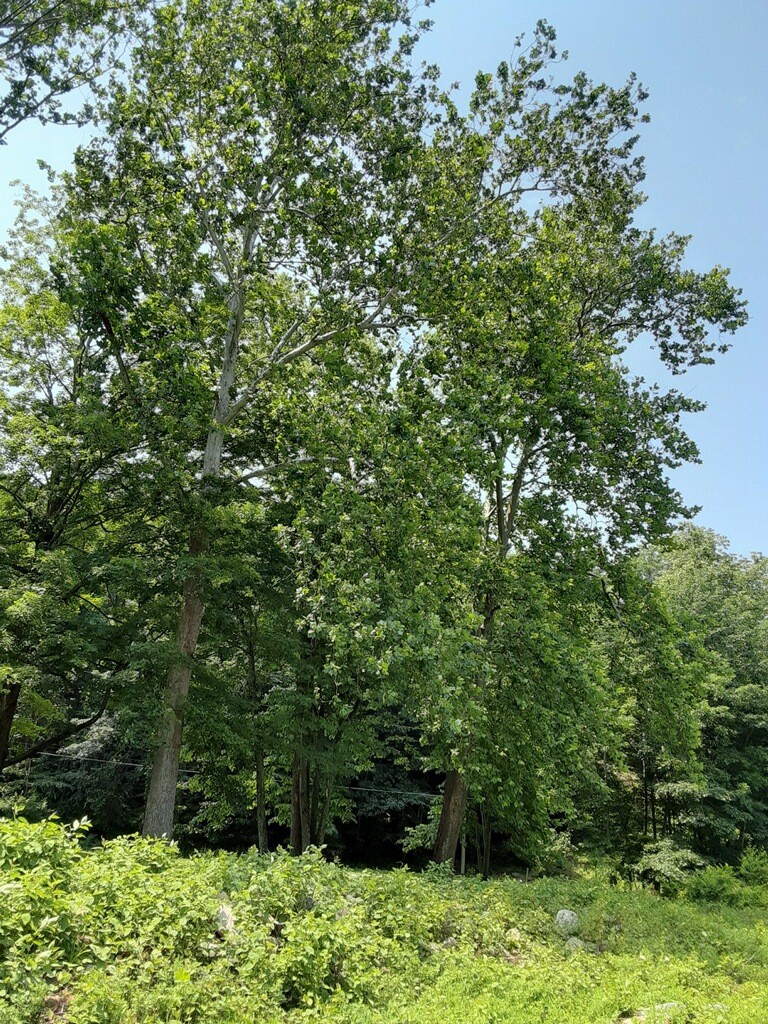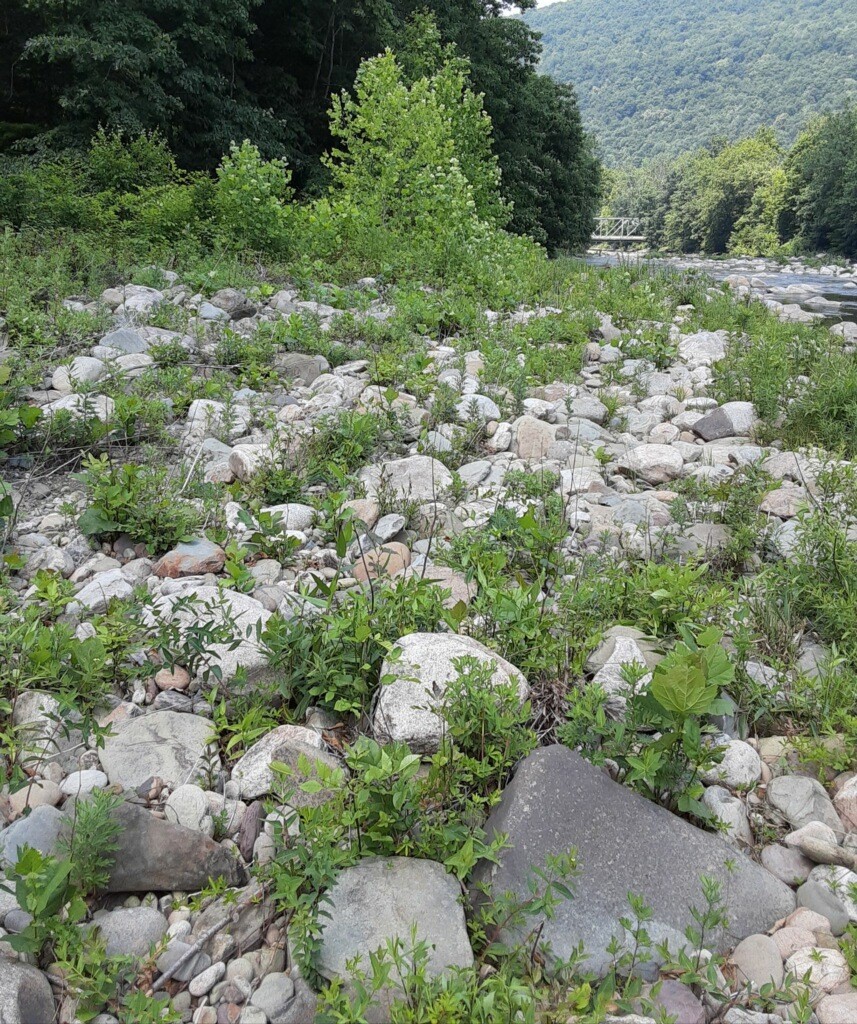By Susan Sprout
Getting a forkful at Forksville this week, afforded me the opportunity to visit several of my favorite Sycamores, AKA Planetrees. that live along Loyalsock Creek.
In Pennsylvania, some have matured to absolutely huge proportions when left alone to keep growing: one in Philadelphia County is over 149 feet tall; Delaware County has one 404 years old; one in Chester County has a circumference at breast height of over 30 feet. Amazing – see why I love Sycamore Trees – such potential!
As they grow, their less than elastic bark cracks and sloughs off to reveal lighter under-bark creating an easy to identify blotchy camouflage pattern of gray, brown, cream and tan that any hunter would be proud to wear. These native trees are common along waterways and low woods, where once established, they appear to be drought-resistant.

Sycamores’ leaves may resemble maple leaves, but they are much bigger – five to nine inches across, with prominent yellow veins, and furry undersides. And, they are not related to maples at all, but are members of the Planetree Family (Platanaceae) that has only eight known living species in the world. The family has been around for over one hundred million years, making some paleobotanists consider our modern Sycamores to be living fossils.
Reproduction takes place in the spring when inconspicuous male and female flowers in hanging bunches are pollinated by the wind, just about the time the leaves begin to sprout. The seeds develop in round spikey balls, green turning to brown, that hang on for about a year before falling to the ground. Pick one up and pull it apart to find the individual seeds surrounded by long hairs – they float in the air and on the water, a second dispersal mechanism. No wonder they are so successful!


